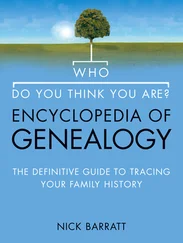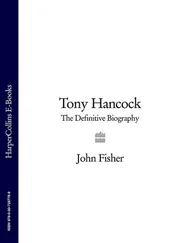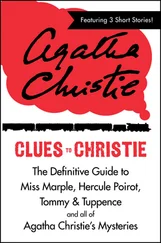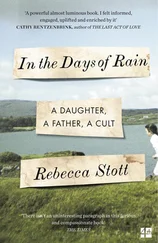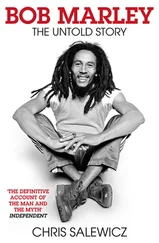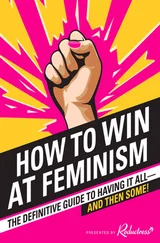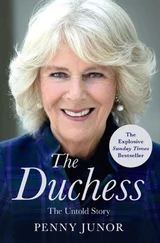Page’s friend Jeff Beck was playing with the Tridents, a rocking blues group he had joined in August 1964, never missing their weekly residence at Eel Pie Island, which would draw up to 1,500 people. Beck accepted the offer.
Page was still shadowed by the ill health that had dogged him during his time with Neil Christian and the Crusaders, and was also aware of the large amounts of money he continued to earn as a session player. But his main reason for turning down the offer, he said, was because of his growing friendship with Clapton. ‘If I hadn’t known Eric, or hadn’t liked him, I might have joined. As it was, I didn’t want any part of it. I liked Eric quite a bit and I didn’t want him to think I’d gone behind his back.’
(This was not the only act of generosity that Page displayed towards his friend Jeff Beck. When, in 1962, he announced he would be leaving Neil Christian and the Crusaders, Page had suggested Beck as a replacement for himself.)
Jeff Beck played his first show with the Yardbirds on Friday 5 March 1965 at Fairfield Halls in Croydon, south London, only two days after Eric Clapton quit the group. They were second on the bill to the Moody Blues, flying high for the first time with their hit ‘Go Now’.
Beck was so grateful that Page had recommended him as Clapton’s replacement that he went round to Page’s parents’ house in Epsom and presented his friend with his 1959 Fender Telecaster. ‘A beautiful gesture,’ said Page later. But Beck’s gratitude was realistic: although distinguished in his blues guitar band the Tridents, it was not until he joined the Yardbirds, whom he enriched with his fuzz-soaked solos, that he found the vessel for his upward flight into the guitar stratosphere. In fact, he soon borrowed a quite specific vehicle from Page: his Roger Mayer fuzzbox, on which Beck worked out the Eastern-flavoured riff for ‘Heart Full of Soul’, the first Yardbirds’ single he was involved in. ‘I still remember the time Jeff came over to my house when he was in the Yardbirds and played me “Shapes of Things”. It was just so good – so out there and ahead of its time. And I seem to have the same reaction whenever I hear anything he does,’ recalled Page.
‘The great thing about Jeff,’ said Chris Dreja, ‘is that his roots were also the blues and rock ’n’ roll, but he was also much wider in his musical tastes. And he had a mind and a talent that wanted to go much further than playing rock ’n’ roll and blues riffs, which was perfect for us because we were about to enter a phase of all sorts of experimentation. In retrospect we put Jeff under a lot of pressure. We would work on stuff and then bring Jeff in. Like, for example, the sitar sound he got on “Heart Full of Soul”. We brought in a sitar player … but it sounded thin and weedy. We said to Jeff, “Can you do it?” And he came in and created this incredible sound. Jeff Beck became a prototype of late-sixties psychedelia. He got chords from Stax and Motown records. The locked-up sound in the band gave it that sound.’
It was in ‘the latter years of the first half of the 1960s’ that Jeff Dexter first encountered Jimmy Page. Dexter was a Mod scenemaker, the DJ at Tiles who, as a 15-year-old, famously demonstrated the Twist on BBC television; he had hung around the 2i’s Coffee Bar in London’s Old Compton Street, the seed-ground of British rock ’n’ roll, where Cliff Richard, among others, had been discovered, and would be instrumental in founding the Middle Earth venue, out of which sprang UK underground rock. ‘Jimmy was running around town at that time. But we really became friends about 1965 or 66. We both had an eye for a nice suit and a nice shirt.’
Page and Dexter would meet up in Soho to rummage through the wares of the area’s assorted rag-trade specialists, sometimes seeking cloth for jackets and trousers, more often looking for potential shirt fabric. An especial temple of suitably exotic material was found at Liberty, the Tudor-fronted department store on Great Marlborough Street. Armed with their cloth, they would then make their way to Star Shirtmakers on Wardour Street, two doors from the Whisky A Go Go. Star Shirtmakers was run by a Hungarian husband-and-wife tailoring team; they would knock up the fabric into shirts styled precisely as their customers desired, for – even then – the ludicrously cheap price of 11 shillings, the equivalent of 55 pence. (After the Beatles had been to their tailor, Dougie Millings, Dexter took them to nearby Star Shirtmakers, beginning a flood of celebrity shoppers at the place.)
One day, when they were leaving Liberty, Page and Dexter found themselves strolling down Kingly Street, which ran off the west end of the store. There they discovered an art gallery called 26 Kingly Street, with extraordinary lighting, sheets of Perspex and glittery screens. London’s first psychedelic gallery, 26 Kingly Street was run by Keith Albarn (whose son Damon is the singer in Blur). ‘We’d just discovered acid,’ said Dexter. ‘I tripped in Jimmy’s house but never tripped with him – I sought refuge with him a few times. I went to a Yardbirds rehearsal when I’d dropped acid. And he looked after me.’
Contrary to Billy Harrison’s dismissal of Page, Dexter insists that his friend was highly regarded on the London music scene, not simply for his musical accomplishments but as an empathetic human being. ‘He was a lovely chap. One of the boys. You’d see him at record launches, and the odd club – though he didn’t go to the Speakeasy as much as many others – and stuff like that. When I was running the Implosion shows Jimmy would come along. Ian Knight, my cohort on those events, went from Middle Earth to becoming the Yardbirds’ staging and lighting guy, and went on to have the same job with Led Zeppelin. We hung out at some of those crazy happenings, like the 14 Hour Technicolor Dream at Alexandra Palace.’
Page had moved up from Epsom and was living in a flat off Holland Road in west London, a thoroughfare that ran from Shepherd’s Bush to Kensington High Street; it was an area in which it seemed every single one of its myriad bedsits contained a hippie hash-dealer. In 1966 Dexter was invited to Deià in Majorca, home to a bohemian community, by Lady June, an artist and éminence grise of the psychedelic scene. In Deià he encountered an especially louche breed of Portobello Road-style hippie chick, some of whom relocated back to London, becoming habitués of Blaises, a nightclub in South Kensington: ‘Jimmy and one of these dodgy birds used to get really stoned and play Buffalo Springfield again and again and again. “This is the direction I want to go in,” he would say. “I want to have a band that does magical things.”’
The folk scene, to which Page was always drawn, remained a prominent feature of Swinging London. ‘I used to go to Les Cousins,’ Dexter said of London’s dominant folk venue. ‘I was best friends with Beverley and John Martyn. Nick Drake only felt comfortable at their flat in Hampstead.’
Dexter was always impressed with Page’s phenomenal knowledge of art: ‘He was a collector. Of everything. He’s kept every piece of clothing he’s had since he was a child. His mother was incredibly neat and tidy. And so is he.’
Dexter also became friends with another woman who would have a significant impact on Page: a French model called Charlotte Martin. She was 20 when they first met, Dexter 19. ‘I first clapped eyes on her in a place called Westaway and Westaway, a fantastic shop near the British Museum that sold Scottish knitwear. All the young birds would gather there or at the Scotch House. She was a fabulous model who did it all: magazine level, and then once people saw how gorgeous she was she was employed all over the place. She did all the modelling with the Fool, for their collection. She was great friends with them because they all hung out at Eric’s place in the Pheasantry.’ ‘Eric’, of course, was Eric Clapton, and he and Charlotte Martin were an item.
Читать дальше


